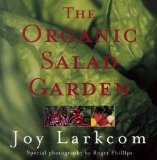

In times of drought, most organic home gardeners must ration their water usage, watering vegetables and favorite flowers while watching their lawns and other plants wither. But across the country some intrepid gardeners are foregoing the tap and turning to another source: gray water.
Gray water is commonly defined as any household waste-water except for toilet water. (That's called black water.) In arid communities with annual water problems, such as California, Florida and the Southwest, gray water systems have been in use since the 1980s.
But in many other parts of the country, using gray water is actually illegal.
The main concern about gray water is the potential for adverse health effects. Gray water can contain harmful microorganisms, which is why gardeners should follow some common-sense guidelines like not using it on plants that will be eaten.
Using gray water actually provides a number of benefits. For instance, you can reduce your potable water usage--and your water bill--since you're not using tap water on your plants. And because the waste-water you're using on your garden isn't getting pumped back to the city's waste-water treatment system, you're also saving energy. Gray water also contains soap residue which adds phosphorous and potassium to your soil, reducing the need for fertilizers. And don't forget: the trees and shrubs in your landscape may be worth thousands of dollars. Being able to keep your plants alive during city water bans protects your investment.
Author and water conservationist Robert Kourik calls gray water "one of the few crimes that's good for society." Kourik is a strong proponent of gray water and the use of drip irrigation to conserve water at all times, not just during a drought. He points out that using gray water during a hose ban might make you suspect in your neighborhood, however, since your gardens will be green and thriving while your neighbors' yards are wilting. "Fight against hose bans," he says. "Work to have your water department set up a tiered system of water rates. Or, if someone uses potable water extravagantly, even at the most costly rate, social peer pressure may put the cork on wasted fresh water."
Some gardeners have been known to collect their own gray water through decidedly low-tech means, like keeping 5-gallon buckets on hand in which to dump dirty dishwater. Others have jury-rigged their washing machine outputs, using hoses that dump directly into a flower garden or lawn area.
If you decide to collect gray water from your home, be sure not to store it for more than 24 hours. After that, bacteria can multiply rapidly, turning your gray water black. Use drip irrigation or hand watering and avoid spraying gray water. (Aerating dirty water can spread bacteria through the air.) And again, it's safest not to use gray water on any edible plants, including all vegetables. Though some studies have shown gray water adds no more harmful bacteria to soil than regular water, it's still a good idea to err on the side of caution.

Join "Garden Notes" and plan for Harvest Success as you track and record your gardening progress. Your Free Personal Garden Journal has pages for jotting down notes on the seeds you start, your new plantings, when you fertilized, and even a graph to plot a new garden.
I didn't want to see another internet "eBook" on growing anything, but my husband signed up for Kacper's free report and I have to tell you, it is WELL worth the read. If you think you know everything about growing tomatoes, I challenge you to read Kacper's report. HIGHLY recommended!

Based entirely on organic gardening principles. This says it all. Joy's book has been fully revised and updated and includes extensive new reading, particularly on oriental and fruiting vegetables, and did I mention, is now entirely based on organic gardening practices. Read More...
